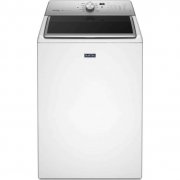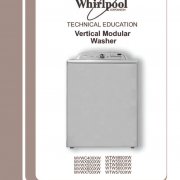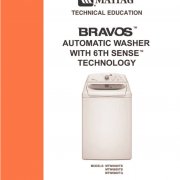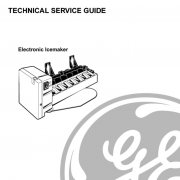Breaker Panel Basics
Service Panel | Breakers | 240-Volt Circuits | GFCI | Neutral & Ground
Intro

The breaker panel is your home’s electrical jugular vein and a safe way to CUT power to an appliance for a successful and safe repair. We have become so accustomed to electricity that we sometimes forget that it can also be extremely hazardous. Because of this often overlooked fact, several types of electrical safety devices are installed into every home to make the use of this modern day necessity a little less dangerous.
Service Panel
Electricity enters the house through three incoming electrical service wires that are attached the two top lugs of the meter mount inside the main service panel. At the top of the service panel a meter is installed to measure the amount of electricity being used within your home. When the meter is in place, power is supplied to two bottom lugs. The main breakers then close the circuit from the bottom lugs to a set of separate, metallic strips that extend through the center of the service panel called buss bars. Which, in turn, pass it along to the circuit breakers.
![]() Do Not Remove The Breaker Pannel Cover!
Do Not Remove The Breaker Pannel Cover!![]()
Breakers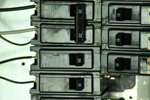
Breakers are designed to tolerate a predetermined amount of amperage or current flow before they will automatically open and break the circuit. Every separate circuit within your home has its own breaker switch. Most breakers’ amperage ratings are clearly marked on the switch as 15A, 20A, 30A, 40A, 50A, etc. (Electricity 101 has a more thorough explination of amperage and wattage loads as well as the relationship between the two.) Your home circuits should be labeled within the service panel for example, Kitchen Circuit, Dishwasher, Master Bath, or Sub Panel. A sub panel is an additional service panel located in some other location that receives its electricity supply from the main panel. In addition to automatically opening to remove power from a circuit, you can also manually turn the power off to an individual circuit or the entire house with these switches.
240-volt circuits
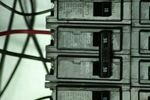
A 120-volt circuit will be connected to only one of the two buss bars while a 240-volt circuit will be connected to both bars, each supplying 120 volts. A 240-volt circuit requires ether one special breaker switch that attaches to both buss bars or two switches tethered together. If one of these two breakers “trip” or open the 240-volt circuit will only be supplied 120 volts. This is especially important for electric dryers, electric cooking appliances, and air conditioner units.
GFCI
Outdoor, kitchen and bathroom receptacles should be protected by a special ground-fault circuit interrupter (GFCI, or GFI) circuit breaker to guard against electrocution. Ground fault receptacles are highly sensitive to any short, and will trip or open at the slightest sign of trouble. These devices are often the cause of multiple dead outlets, as soon as a GFI receptacle “trips” it will stop electricity from flowing to the entire electrical circuit on which it is installed. You can test a GFI receptacle by pressing the test button. If the GFI plug is active you should hear a pop as the internal breaker clicks open. If the GFI plug is tripped you can reset it by pressing the bottom button. If the plug will not reset you will need to look for the source of a short within the home circuit.
Neutral & Ground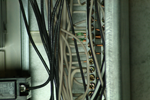
A Circuit must also have a neutral connection for electricity to flow and do its work. The third supply wire entering the house attaches to a neutral connector this creates an area of electrical “low pressure” causing the electrons to flow. If this neutral return connection is broken electricity will not flow. All circuits should also be grounded. A continuous conductor (often solid copper) 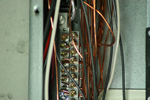 connects the neutral connector inside the panel to a ground such as a water pipe or metal rod driven into the ground. This serves as a secondary safety in the case that the neutral connection is lost you wont become the path of least resistance to ground. Most components within modern appliances have a connection to ground; however, never assume anything.
connects the neutral connector inside the panel to a ground such as a water pipe or metal rod driven into the ground. This serves as a secondary safety in the case that the neutral connection is lost you wont become the path of least resistance to ground. Most components within modern appliances have a connection to ground; however, never assume anything.

